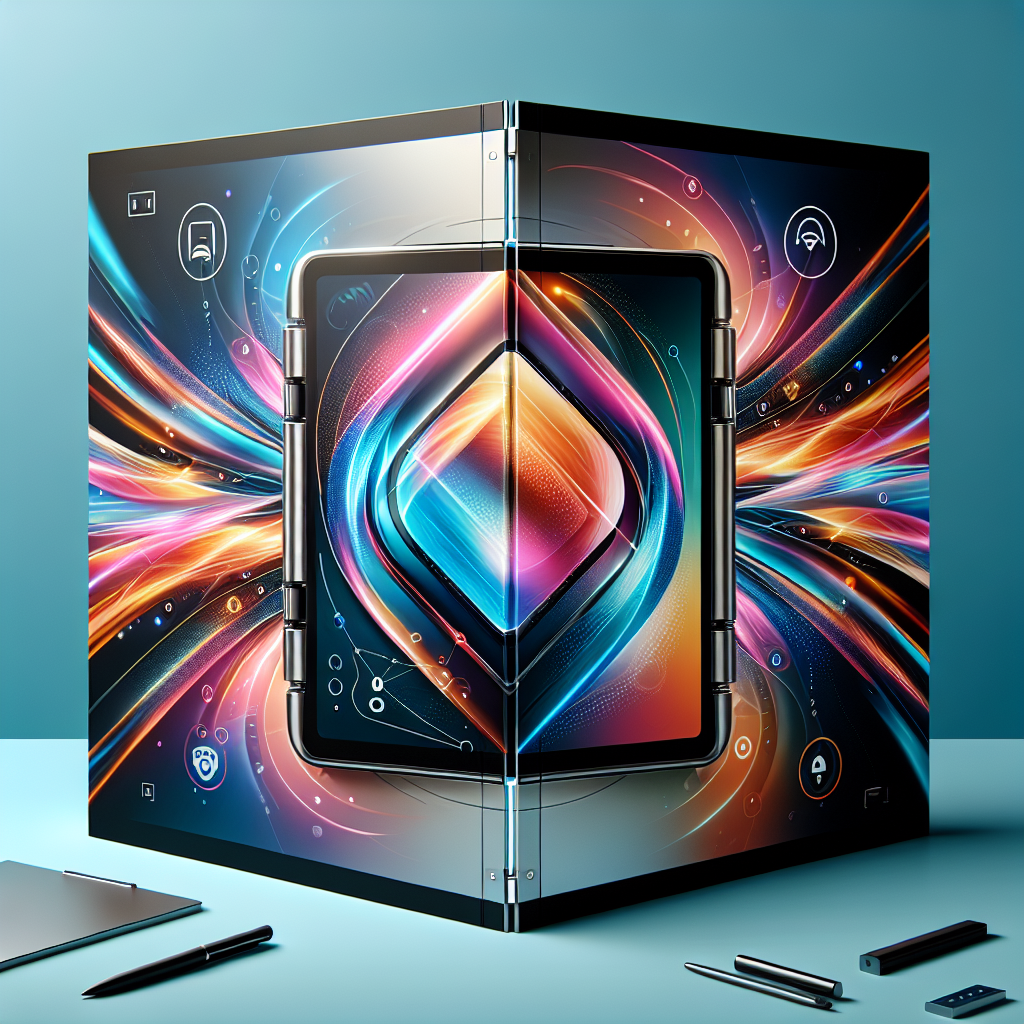
The Next Frontier: Apple’s Foray into Foldable Devices
Apple has long been a frontrunner in innovation, with products that set trends rather than follow them. As technology advances, the evolution of smartphones and tablets has led many tech enthusiasts to speculate about what the next big leap will be for Apple. Recent rumors suggest that Apple is venturing into the realm of foldable devices, with the upcoming iPad Pro being a focal point of these discussions.
A Revolutionary Prototype: Foldable Screen and Face ID
According to a leak from Weibo-based source Digital Chat Station, one of Apple’s engineering prototypes boasts an impressive 18.8-inch foldable screen. This device is not just about portability and form factor; it includes a significant technological advancement in the form of under-display Face ID. The integration of a “metal superstructure lens” allows the Face ID components—both receiver and transmitter—to function seamlessly beneath the display.
This innovation raises the prospect of maintaining a smooth and uninterrupted screen, essential for a foldable tablet. Currently, smartphones with similar technology face challenges, but Apple’s engineering approach might just make this a reality.
Rumors and Speculations: The Future of Foldable Devices
For several years, there have been whispers about Apple’s potential foldable devices, with varying focuses on whether these would be iPads or MacBooks. Recent information hints that Apple’s bold leap may materialize in 2027, coinciding with plans for an OLED display on the rumored iPad Pro. Industry analysts, particularly from Display Supply Chain Consultants (DSCC), predict that this launch will redefine the tablet experience as we know it.
On the other hand, supply chain analyst Ming-Chi Kuo has indicated that LG is gearing up for mass production of display panels specifically designed for a MacBook with a foldable screen. This creates an interesting conundrum for tech users: is the future of foldable technology meant for tablets, laptops, or both?
Designing Away the Crease: A Single Piece of Glass
Mark Gurman from Bloomberg has suggested that Apple’s vision for the foldable iPad includes a design devoid of the traditional crease associated with foldable displays. His reports emphasize that Apple’s goal is a beautiful, sleek device that appears to be a single piece of glass when opened. This aesthetic principle aligns with Apple’s reputation for design excellence.
Such an ambitious plan echoes current consumer preferences for a seamless design experience, particularly as companies explore bigger screens. Consumers anticipate that a foldable device could serve various multimedia purposes—from watching movies to performing professional tasks on the go.
Comparing Touch ID and Face ID: A Trade-Off for the Foldable iPhone?
Interestingly, while the foldable iPad is set to innovate with Face ID, the foldable iPhone takes a different route. Reports indicate that instead of under-display Face ID, the upcoming foldable iPhone will likely feature Touch ID integrated into a side button. This decision exemplifies Apple’s adaptability, especially given the design challenges encountered while trying to conserve internal space in such a compact device.
Consumer reactions to these design decisions will be crucial as foldable technology finds its footing in the market. For example, a device as versatile as a foldable iPhone could either bolster Apple’s market share or risk alienating traditionalists who prefer established functionalities.
The Broader Implications of Apple’s Foldable Ambitions
The potential launch of the foldable iPad Pro also fuels discussions about how Apple’s broader ecosystem will evolve. The integration of new technologies like under-display Face ID could lead to enhancements in app development, user interaction models, and the overall Apple experience.
Current users of devices such as the iPad Air and iPad Mini will be watching closely to see how these advancements translate into everyday use. The question remains: will Apple’s innovations in foldable tech result in superior devices, or will they simply add more complexity to a device’s overall usability?
Consumer Demand and the Foldable Market
The market’s reception of foldable devices has been mixed. While early adopters have shown interest, some users have returned to traditional devices, citing durability concerns and usability issues as major drawbacks. The success of Apple’s foldable offerings might hinge on how they address these concerns.
For consumers, the appeal of a foldable device extends beyond the novelty; it’s about versatility, adaptability, and enhanced functionality. If Apple can successfully merge innovative technology and user-friendly design, it could set the standard for future devices in a burgeoning category.
Looking Ahead: What’s Next for Apple?
The next few years will determine whether Apple’s foldable iPad Pro becomes a game changer in the industry. With industry veterans like Kuo and Gurman weighing in on timelines and expectations, anticipation continues to mount. Apple’s history of setting trends suggests that any advancements will likely have significant implications for competitors and consumers alike.
As speculation intensifies, Apple enthusiasts and industry watchers alike will be keeping a close eye on developments. Will the foldable iPad Pro with under-display Face ID pave the way for a new category of devices, or will it falter like some of its predecessors? Only time will tell.
To learn about the disclaimer of liability for the content of this website, click here



